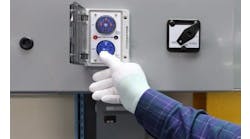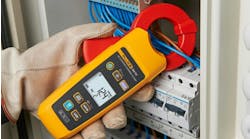Every lockout/tagout (LOTO) procedure is different from every other one. Why is this? Even if you have eight identical production machines, the ID numbers of the supply breakers will differ. The asset numbers of the machines will differ. And the asset numbers of any local disconnects (for example, the local disconnect for the main drive motor) will also differ.
A lockout/tagout procedure can’t say something as simple as, “Lock out the electrical supply”. It must specify which equipment is to be locked out. Or as NFPA 70E says, “A lockout/tagout procedure shall be developed on the basis of the existing electrical equipment….” [120.2(B)]. The full text is, “A lockout/tagout procedure shall be developed on the basis of the existing electrical equipment and system and shall use suitable documentation including up-to-date drawings and diagrams. The procedure shall meet the requirements of applicable codes, standards, and regulations for lockout and tagging of electrical sources.”
This last sentence of the requirement didn’t appear in the previous (2015) revision. It needed to be specified because lockout/tagout isn’t just for preventing people from being electrocuted. Sometimes it must be done to render an entire facility into a “low risk” condition so that certain work can be performed. Sometimes there’s a big problem if you deenergize certain equipment — or both conditions may apply at the same time. Multiple organizations within a company and/or multiple companies may participate, and compliance can get quite involved.
For example: A plastics company in Alabama needed to take its fire pump out of service for a couple of hours to add a soft starter (along with manual bypass) after clearing the project with their insurance company and the fire marshall. But the pump had its own dedicated power line which had to be locked out by the local utility. And this had to be coordinated with the production superintendent and all production departments so that certain activities (such as hexane rinsing operations) were not performed during this window. The procedure involved locking out far more than the fire pump supply.
Whoever writes the procedure needs to take into account what the equipment does, what happens if it’s offline, and what communication may be needed to safely deenergize it and then safely energize it again. The identification of power sources should be verified by someone other than the person writing the procedure.
Whoever executes the procedure should not assume the procedure is correct, either. The people who are going to hang their locks and tags should do a walkdown to verify the existing equipment against the drawings. If there’s a discrepancy, it must be resolved. It’s best when the resolution process includes a qualified person not in the crew performing the lockout/tagout. This walkdown also helps the crew understand the procedure and the equipment, so it should be done no matter how many times the procedure has been used (and proven).




